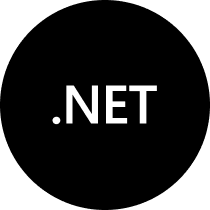- Developer
- Business role
- CTO/IT Director
- CEO/Founder
- Product Owner
- Other
Healthcare Industry
What is Health Technology?
Health technology is the application of medical and scientific knowledge to diagnose, treat, and prevent illness and injury.
It includes everything from apps that help you stay fit to digital solutions that make hospitals run more efficiently.
There has been an explosion of health technology start-ups in recent years, and many of them are focused on reinventing healthcare.
The global Healthcare industry was worth $8.45 trillion in 2018, and it’s only expected to grow in the coming years.
Many different industries make up the healthcare space, including healthcare technology, pharmaceuticals, medical devices, and health insurance.
The Healthcare industry has seen significant technological advancements over the past decade, and it’s only going to get more competitive as new technology comes on the scene, such as mobile/web applications, wearables, and telemedicine.
The current state of the Healthcare industry
The Healthcare industry is in a state of flux, with rapid changes in technology and services driving transformation in the business.
This presents opportunities for investors in health technologies and apps, who stand to benefit from the increased demand for these products and services.
The health technology market is growing rapidly, with analysts projecting a compound annual growth rate (CAGR) of over 28.4% through 2022. This growth is driven by several factors, including the aging population, the increasing prevalence of chronic diseases, and advances in technology.
Additionally, advancements in technology have made it easier for consumers to access health information on their own terms. Advances in electronic medical records (EMR) have made patient data more accessible to individuals, while advancements in mobile computing have enabled them to get this information on the go.
The global transformation in healthcare services is creating new business models and opportunities for entrepreneurial investment while also increasing the competition for established players in the industry. Investors stand to benefit from increased demand across these health technologies and apps.
What effect does Health industry transformation have on business?
The health industry is currently amid a massive transformation. This transformation is affecting businesses in a variety of ways. One of the most significant impacts is that businesses now have to make changes to the way they operate to stay competitive.
These changes are impacting many areas of healthcare, including medical devices, diagnostics, pharmaceuticals, and care provisioning. The healthcare market will continue expanding into a wider variety of service offerings to address a greater number of human needs.
Another impact of the health industry transformation is that it is causing businesses to rethink their strategies when it comes to providing healthcare services. They are now looking for new and innovative ways to provide these services, resulting in increased competition.
Healthcare companies are increasingly turning to app developers to create products that allow patients to engage more directly with their wellness while enabling physicians to interact with patients remotely through video conferencing.
This also means that investors can invest in new and emerging businesses, as well as existing companies already operating within the industry. It is expected that during this period of transformation, investors will be able to invest in more than just established healthcare companies and technologies/apps.
Let's work together on the Healtcare product!
The future of technologies in Healthcare
The Healthcare industry is constantly evolving, with new technologies and treatments being developed every day.
Consumer demand is at an all-time high, which means there are plenty of opportunities that still can be seized. Here are some of the trends that we can expect to see in the future:
1. Wearables in Healthcare. Wearable technology has become increasingly popular in recent years, with devices such as Fitbits and Apple Watches becoming ubiquitous. This trend is also starting to make its way into the Healthcare industry, with wearables being used to track various health metrics such as heart rate, sleep quality, and calorie intake. There are many potential benefits of using wearables in healthcare for both patients and doctors.
2. Artificial Intelligence (AI) in Healthcare. AI has already started to make its mark in the Healthcare industry, with a number of start-ups and companies working on AI-based solutions for various medical problems. One of the main benefits of using AI in Healthcare is that it can help to reduce the cost of treatments. For example, Babylon Health is developing an AI-based chatbot that can diagnose medical conditions and provide treatment recommendations.
3. Telehealth. Telehealth refers to the use of telecommunications technology to provide healthcare services remotely. This can include things such as video conferencing, text messaging, and online consultations. One of the main benefits of using telehealth is that it can help reduce healthcare costs. Another benefit of telehealth is that it can help to improve access to healthcare services. For example, patients living in rural areas or those unable to travel for medical reasons can often receive treatment via telehealth.
4. Integration of Healthcare Systems with Big Data. The Healthcare industry is starting to embrace big data, with a growing number of healthcare providers and hospitals integrating big data systems into their operations. A major benefit of using big data in Healthcare is that it can help to improve the quality of care. For example, hospitals can use big data systems to track the outcomes of treatments and identify areas where improvements can be made. Big data can also be used to improve patient engagement (patients’ feedback and product recommendations).
5. Mental Health Apps. Mental health apps are another developing trend in the Healthcare industry. These apps can be used to track mental health metrics such as mood, stress, and anxiety levels. There are a few potential benefits of using mental health apps such as Calm and Headspace. They can help patients better understand and manage their own mental health and reduce the stigma attached to mental illness.
6. Personal Training Apps. One of the latest trends in the Healthcare industry is personal training apps. These apps allow you to track your workouts, calories burned, and other health data. They also provide personalized workout recommendations and diet tips. Personal training apps are a great way to stay motivated and get in shape. They are also a cost-effective alternative to hiring a personal trainer.
7. HealthTech and InsurTech Alignment. HealthTech refers to the use of technology in the Healthcare industry, while InsurTech refers to the use of technology in the insurance industry. HealthTech helps improve the quality and accessibility of Healthcare, while InsurTech helps improve the affordability of insurance. One of the main benefits of the alignment of HealthTech and InsurTech is the reduction of costs. By using technology, both industries can reduce administrative costs and improve efficiency.
8. Cloud Computing. Cloud computing provides access to various services or products, usually over the internet. These may include software, computing power, storage, databases, etc. One of the main advantages of cloud computing is the access to technologies that would otherwise be too expensive. It allows individuals to access these technologies at a low cost. Cloud computing is also beneficial for healthcare institutions because it provides enhanced security and better disaster recovery options.
9. Job Marketplaces for Health Specialists Only. Another of the latest health industry trends is job marketplaces for healthcare specialists only. Job marketplaces like Nursa app for nursing recruitment in the US, Vivian Health for healthcare jobs marketplace built to serve healthcare professionals first, and MediCarrera are examples of this trend. These job marketplaces focus on recruiting specific types of individuals or catering to specific needs of healthcare professionals.
10. Apps Dedicated to Specific Illnesses. Different apps dedicated to specific diseases are also gaining traction. These apps provide information and support for patients with a specific illness. They are often tailored to the needs of that particular illness. One example of this trend is Cancer.Net Mobile dedicated to cancer treatment. It provides information on cancer symptoms, treatments, and coping strategies. It also includes a section for caregivers.
Technologies we use at LeanCode
Our Projects
How to capture value from Healthcare technology?
The Healthcare technology industry is growing rapidly as new technologies are developed to improve the quality and efficiency of healthcare services. There are many ways that healthcare organizations can capture value from these new technologies.
1. The first way to capture value is by implementing the new technology into their operations. This can be done by integrating the latest technology into their existing systems or creating new systems specifically for the new technology. Healthcare organizations should also make sure that their staff is trained on using the new technology and familiar with its benefits.
2. Another way to capture value from healthcare technology is to understand the patient journey and experience. Think 'patient pathway back' not 'product forward,' which means focusing more on how the technology can make patients, physicians, and providers' lives better rather than focusing only on the product. Capturing such opportunities depends on understanding the pain points and how digital health solutions might address them.
3. Companies and startups that want to build new products need to base their products operations on collecting and managing data in the right way. Instead of keeping data from different teams and products siloed, companies should link all internal and external data - a capability made possible by a modern, flexible IT architecture. It also means it might be necessary to consider the broader environment they operate in when designing digital solutions.
How to increase a Health Technology product’s success rate?
Health technology products are becoming increasingly common as the Healthcare industry grows. However, not all health technology products are successful.
In order to increase a health technology product’s success rate, it is essential to define a clear value proposition that addresses unmet customer needs, create an enticing product and experience for users, and explore different business models.
1. Define a clear value proposition that addresses unmet customer needs. This can be done by conducting market research to understand what problems or needs customers are experiencing that your product can solve.
2. Create an enticing product and experience for users. When designing a health technology product, putting the user at the center of your product matters. It means that you should focus on creating an experience that makes customers feel engaged and valued. Health technology products can incorporate innovative technologies like virtual reality (VR) to create a fun and interactive user experience.
3. Use healthcare and technical expertise while developing new products. Medical and technological points of view and needs do not always sit comfortably together given their divergent working methods and cultures. To design a product that can be willingly and widely used, the relevant expertise must be at hand to guide product development.
4. Set a business model suitable for your product’s customers. There are at least several business models that you can choose from, for example: the employer as the customer (employee health programs), direct to customer (monthly fee for access to product), healthcare or pharmaceutical companies as the customer (service is offered to patients), prescription digital therapeutics (physicians prescribe a course of treatment). Think about it at the early stage of development.
5. Test your product before expansion with a small customer base. You can begin with a partnership with one large employer and focus on a few clinical commissioning groups. You will collect more insight into the users’ needs and behavior and more complex problems. It is also good to start with one therapeutic area and then move to another one when the first product gains traction.
For health tech products to be successful, it's crucial to create an enticing product and experience for users while also defining a clear value proposition that addresses unmet customer needs.
At LeanCode, we can help you design and build digital products that meet the needs of modern patients and caregivers.




